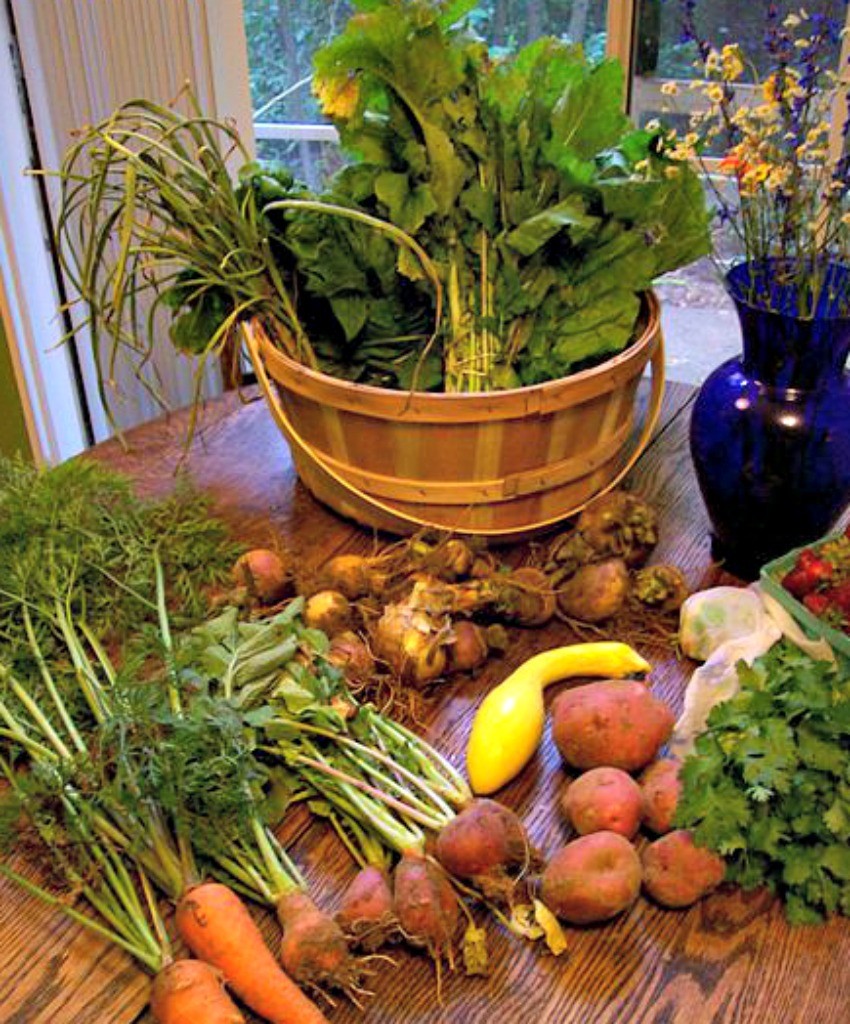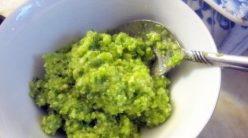When you stroll through the farmers’ market or pick up your CSA box, you’re likely to find something that you won’t find in area supermarkets — whole plants.
Local growers tend to leave the leaves on root vegetables like beets and carrots, keep the flowery fronds on the fennel and otherwise give you a lot of extras with your produce. Likewise, when you pick your own fresh garden produce you’ll have all of these other parts free to use, as well.
What you may not realize is that those leaves, stems and other “extras” can also be used in the kitchen for all kinds of wonderful (and tasty) uses.
Swiss chard stalks can be sliced and sauteed for stir fries or added to soups and stews like celery.
Beet greens can be sauteed for a healthy side dish. Here’s one recipe and here’s a super simple vegan recipe for the stovetop or microwave. Beet greens can also be added to green smoothies (use a light hand and balance the flavor with zestier fruits like pineapple and citrus). You can also thinly slice them and add them to soups and stews.
Turnip greens can also be sauteed, sliced for soups or used (lightly) in green smoothies. Turnip greens are often bitter tasting, though. To counteract this, you can boil them well in water first and discard the cooking water, then use them in your recipe. This gets rid of a significant portion of the bitter compounds, though it also gets rid of some of the nutrients. A very long cooking time sometimes also helps with bitterness, as does the addition of an acid like apple cider vinegar or lemon juice. Turnip greens picked after a frost are said to be less bitter, too.
Celery leaves can be added to green smoothies or sliced and used in soups.
Corn cobs can be simmered with onion and carrot for a simple, delicious veggie stock. Add salt, pepper and herbs of choice to finish it off.
Pumpkin seeds can be tossed with a bit of olive oil and salt and roasted.
Broccoli stalks can be peeled and sliced lengthwise to eat raw with dip. You can also peel off any tough outer parts and then shred them for salads and cole slaws. Our family also loves them shredded along with shredded potatoes, onion and/or cauliflower to make homemade veggie tots. Steam the shredded stems or cook them briefly in the microwave until tender, then add them to the other veggies along with some beaten egg, parmesan cheese, salt and binder of your choice (bread crumbs, mashed potato flakes, etc.). Shape them into little tots, place on a greased baking sheet and bake at 375 until golden, turning once. They’re delicious dipped in ranch dressing!
Watermelon rinds can be pickled for a tasty, old fashioned snack. There are both sour and sweet versions, and some that combine both flavors.
Cauliflower leaves can be sliced and sauteed in butter or vegetable oil with some diced onion for a delicious side dish, or used in stir fries.
Fennel fronds can be used as garnishes or added to dips and dishes as you would use dill or similar herbs.
Citrus peels can be used for zest or can be candied. They’re also wonderful to add flavor to fruit syrups and juices. Add the strips to simmering fruits and then remove when serving or canning. Try to purchase organic citrus if you plan to use the peels.
Garlic scapes are the long, chive-like stems that grow on the tops of garlic bulbs in the early summer. These make fantastic pesto and are wonderful in stir fries. You can also dice them and toss them with new potatoes, olive oil and salt for a delicious side dish (microwave or bake, covered, until tender).
Onion tops (or chives) can be sauteed and used for stir fries or other dishes, just as you would use onion. Smaller chives from young onions are also delicious raw in salads and as a garnish for soups.
Potato peels can be baked for a tasty side dish. Make sure the potatoes are well scrubbed and then spread them on an oiled cookie sheet. Drizzle with olive oil or dot with butter, then sprinkle with salt and pepper and bake at 450 for about 15-20 minutes, stirring occasionally. Sprinkle with shredded cheese during the last minute of baking or serve with your favorite dip or sauce. Again, if you’re planning on eating the peels, buy organic! Aldi’s has very reasonable prices on organic potatoes or you can grow your own.






